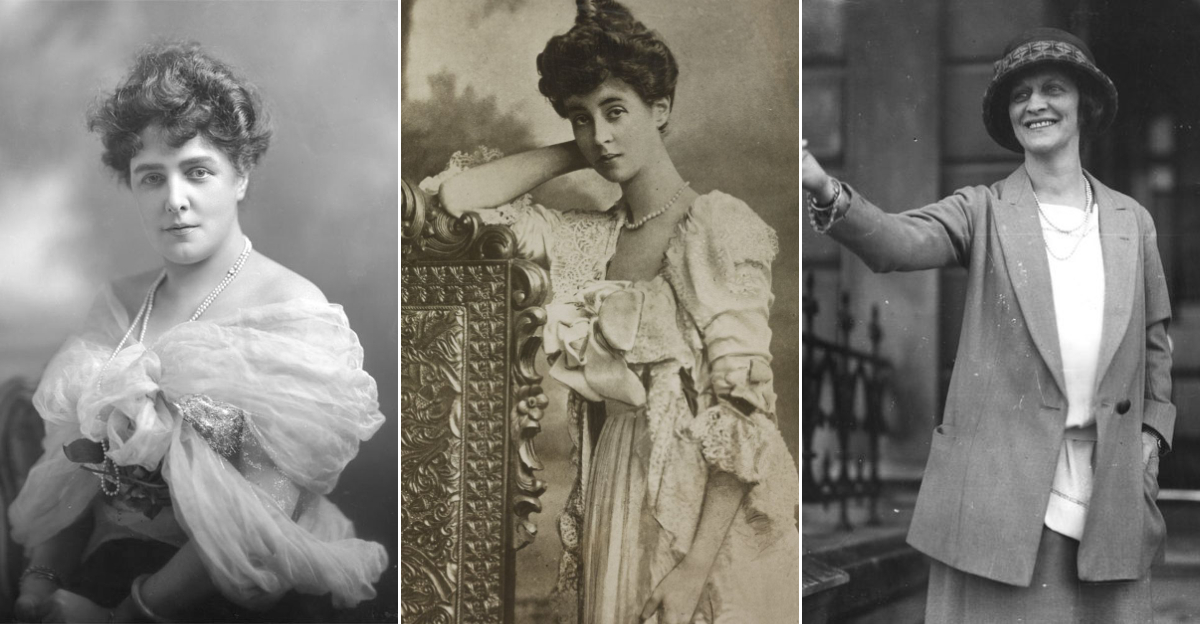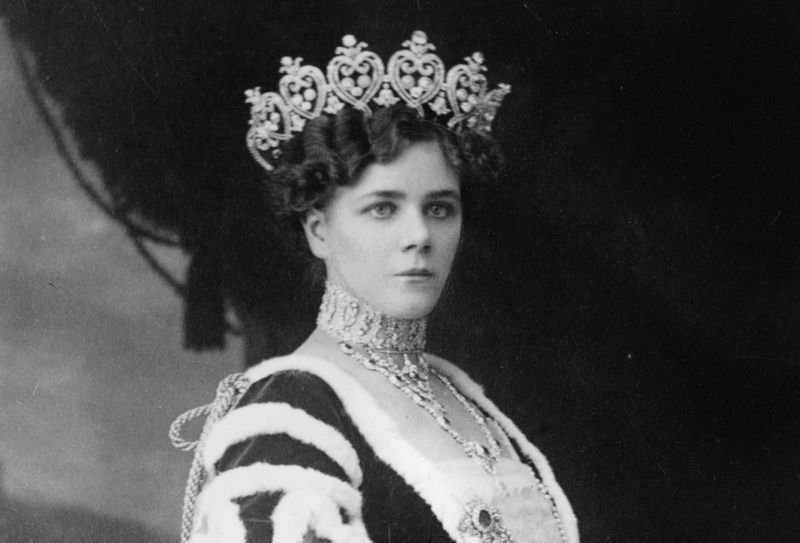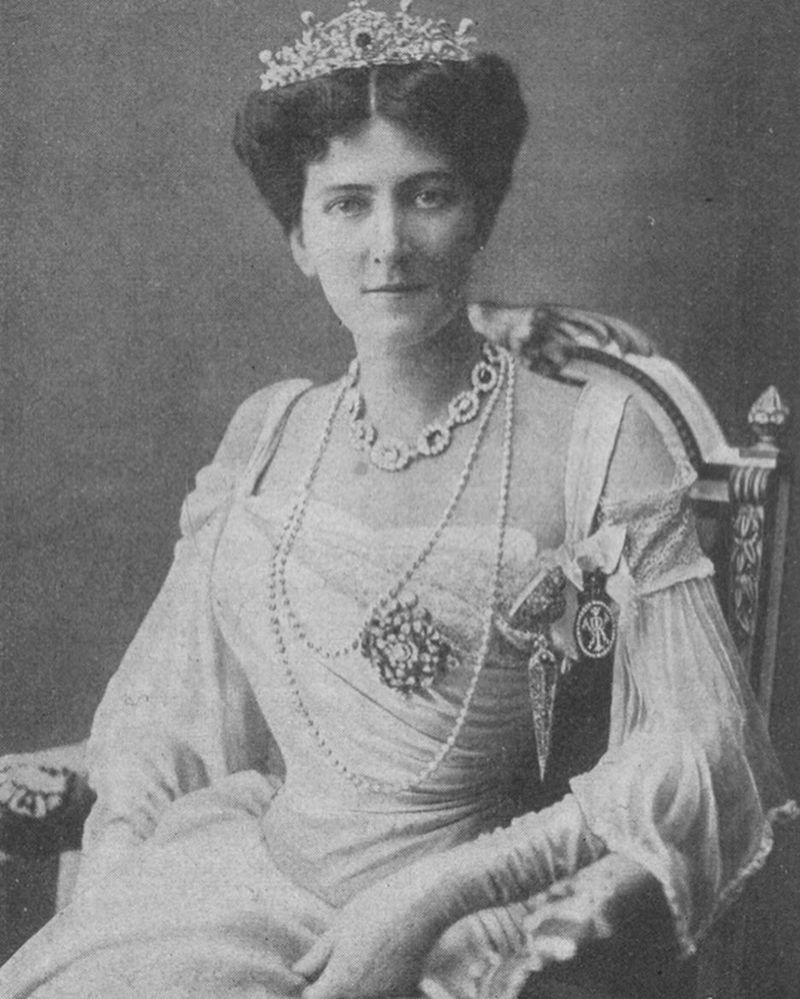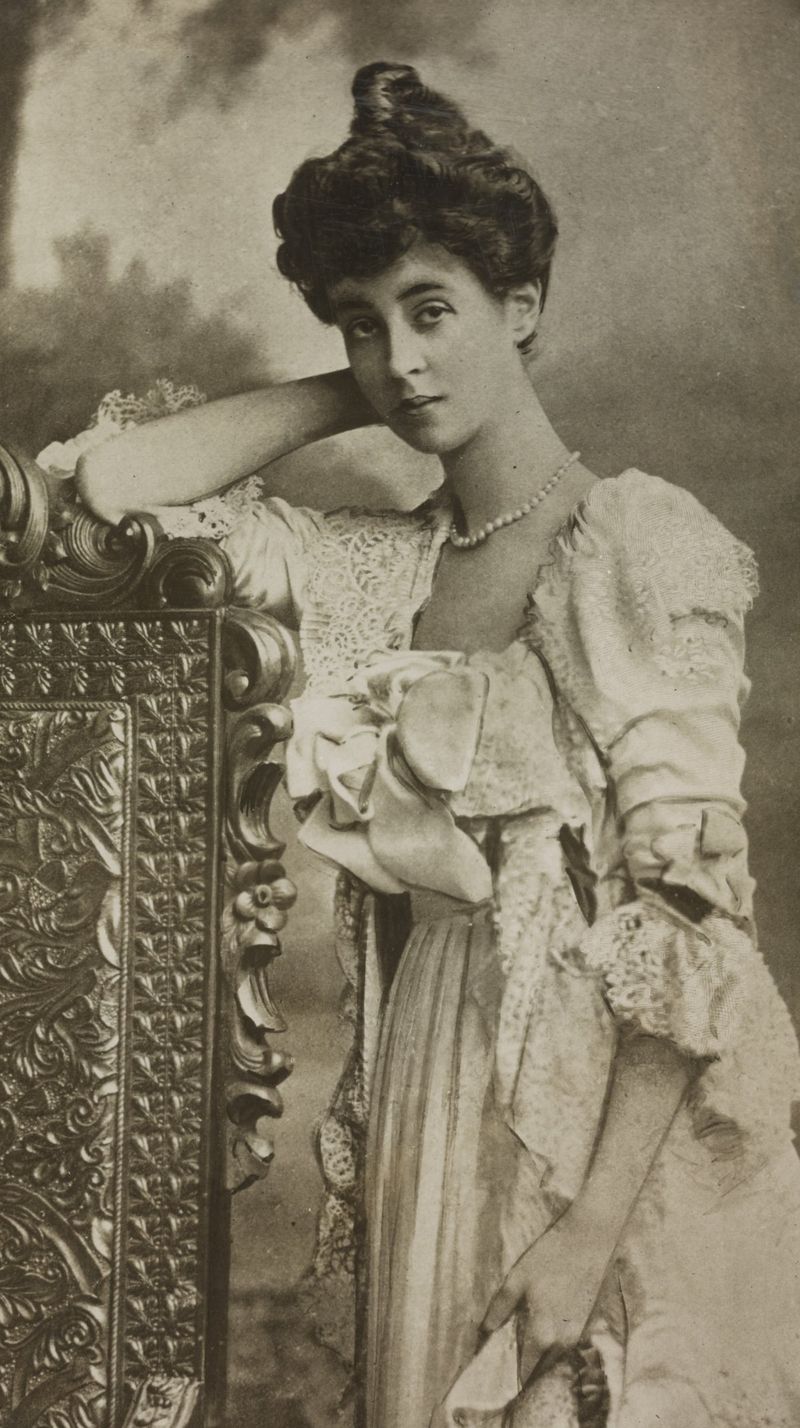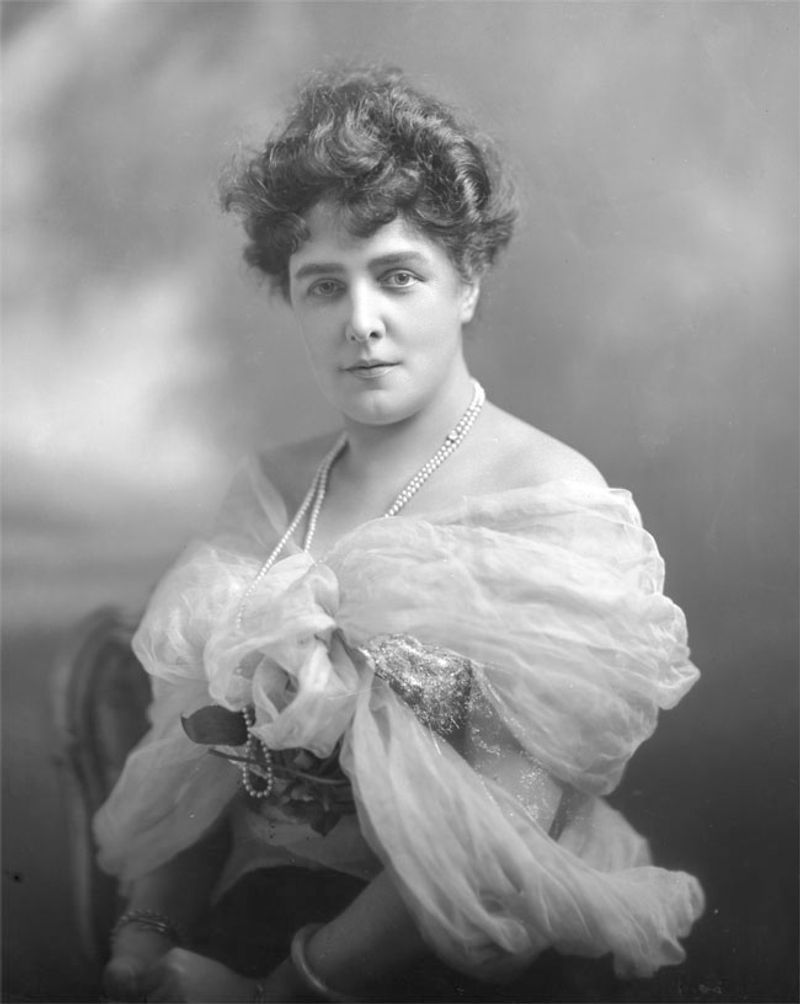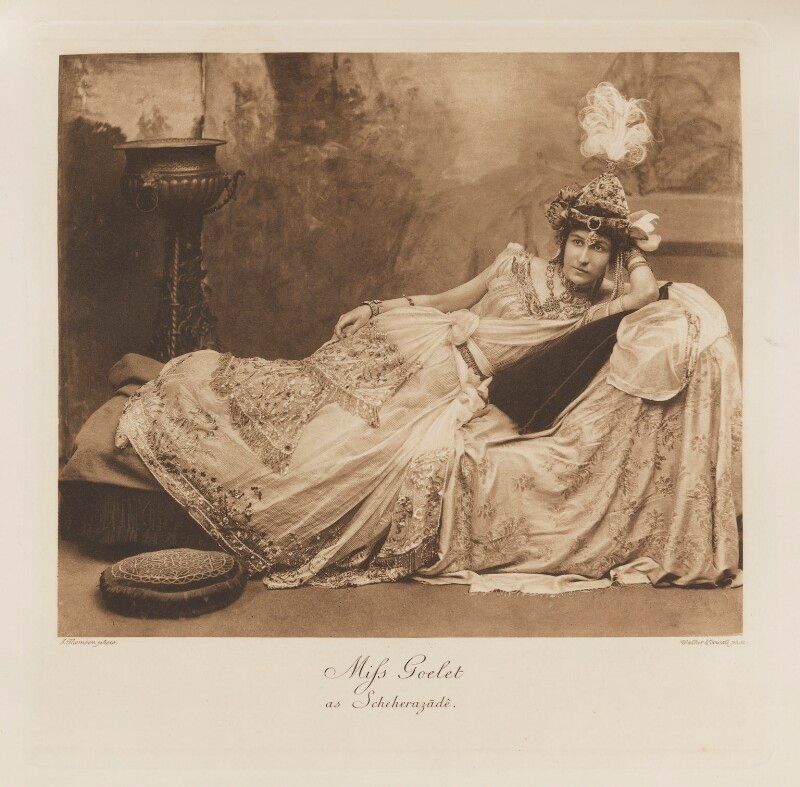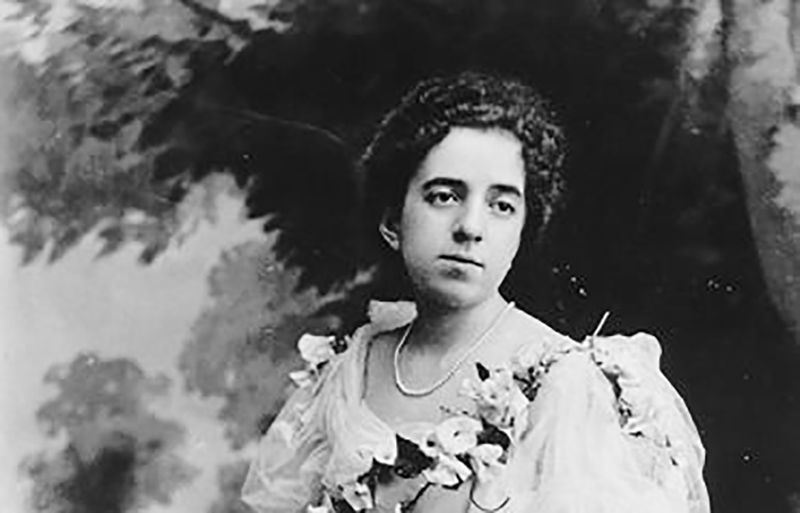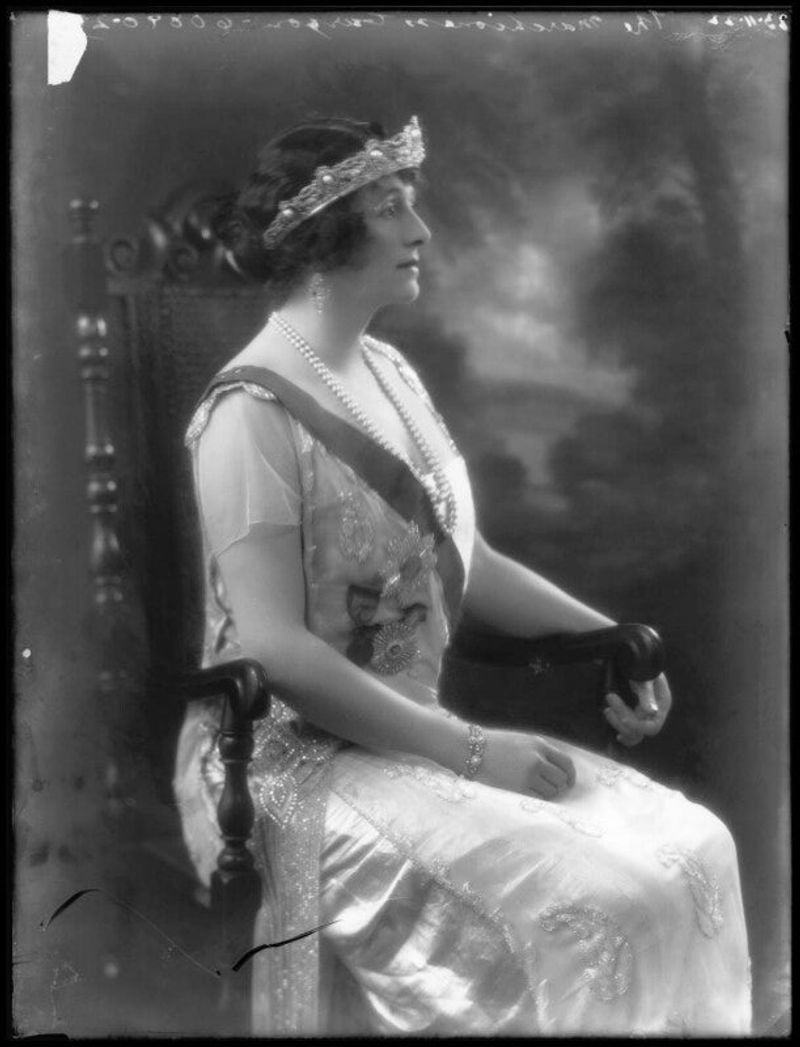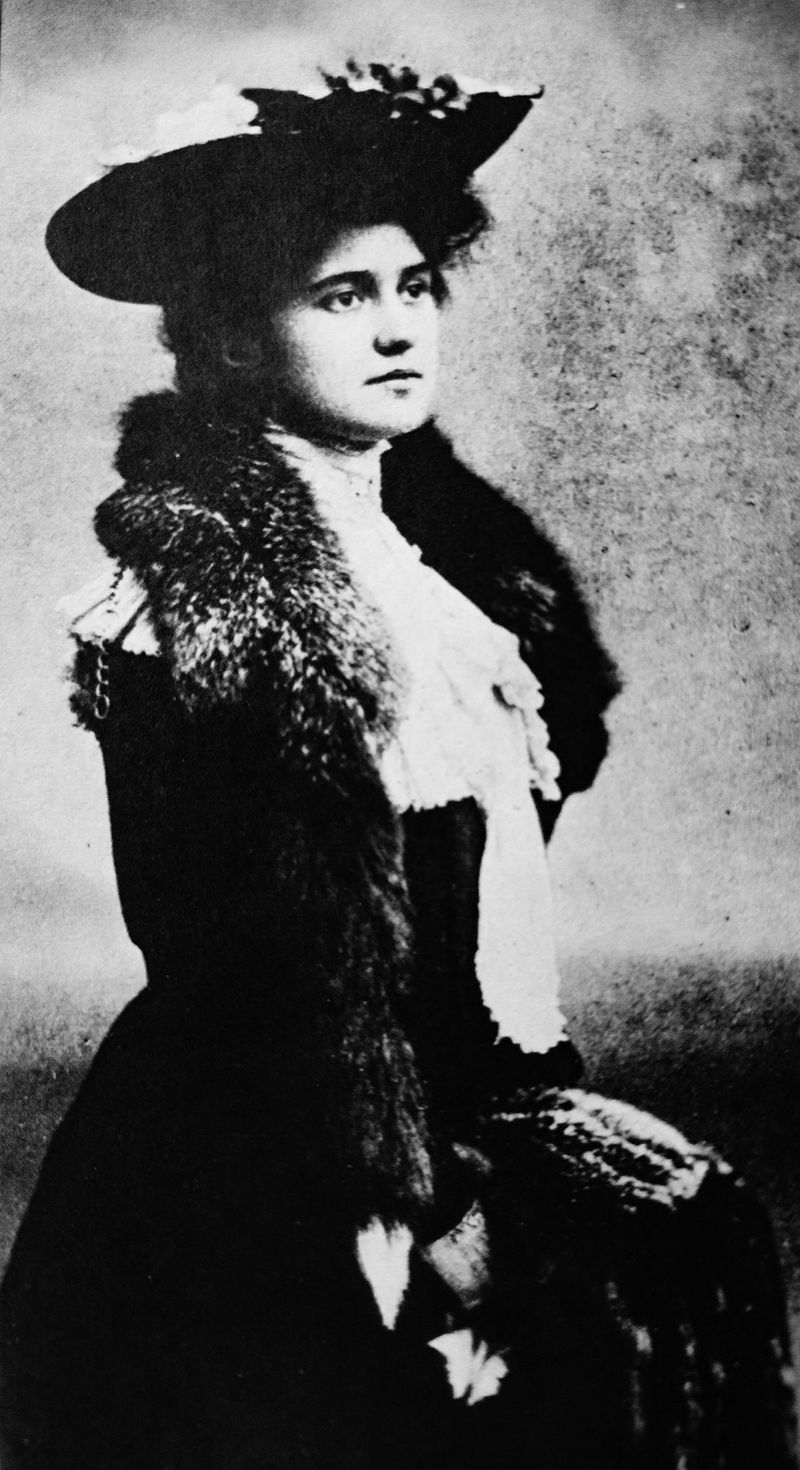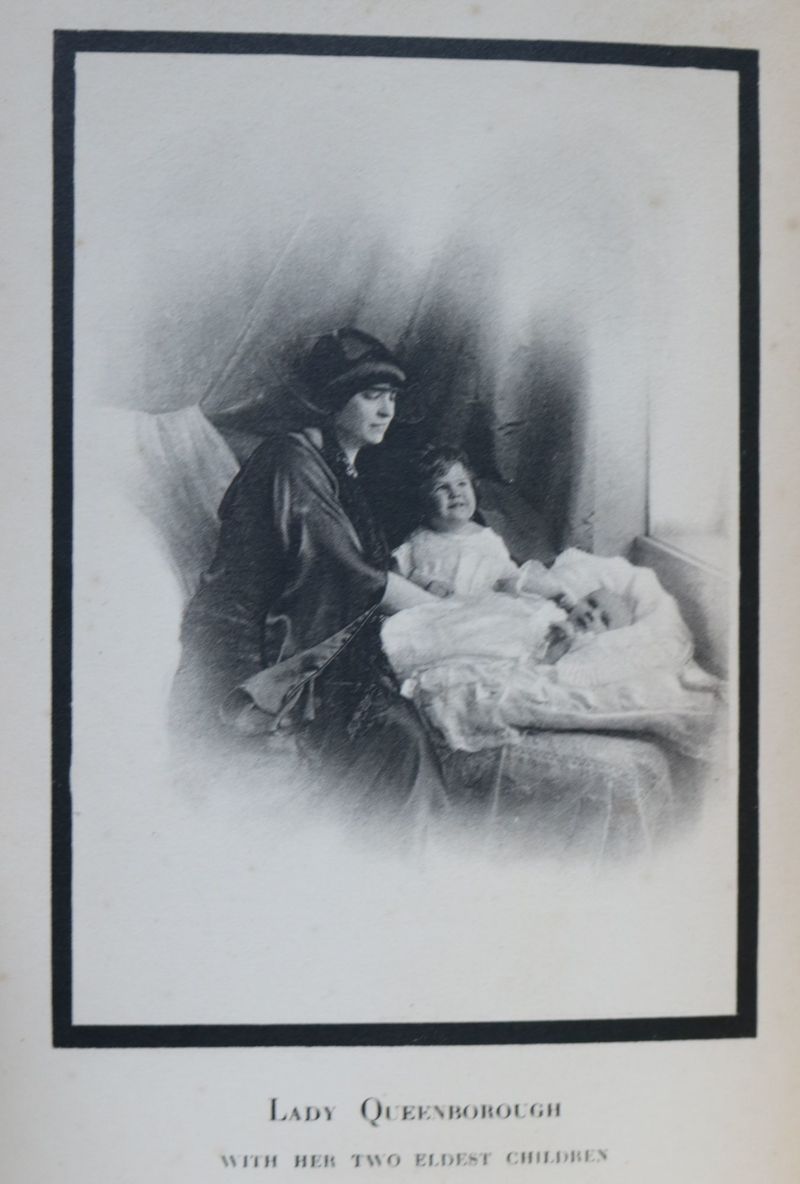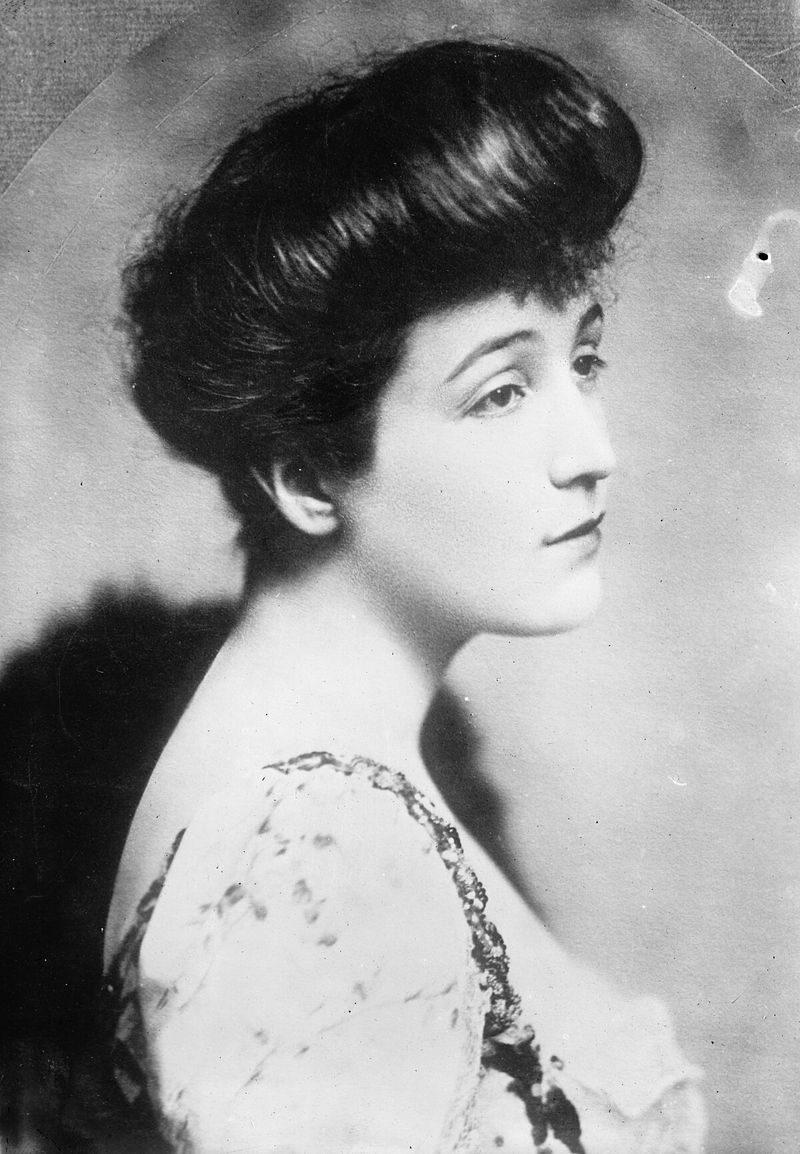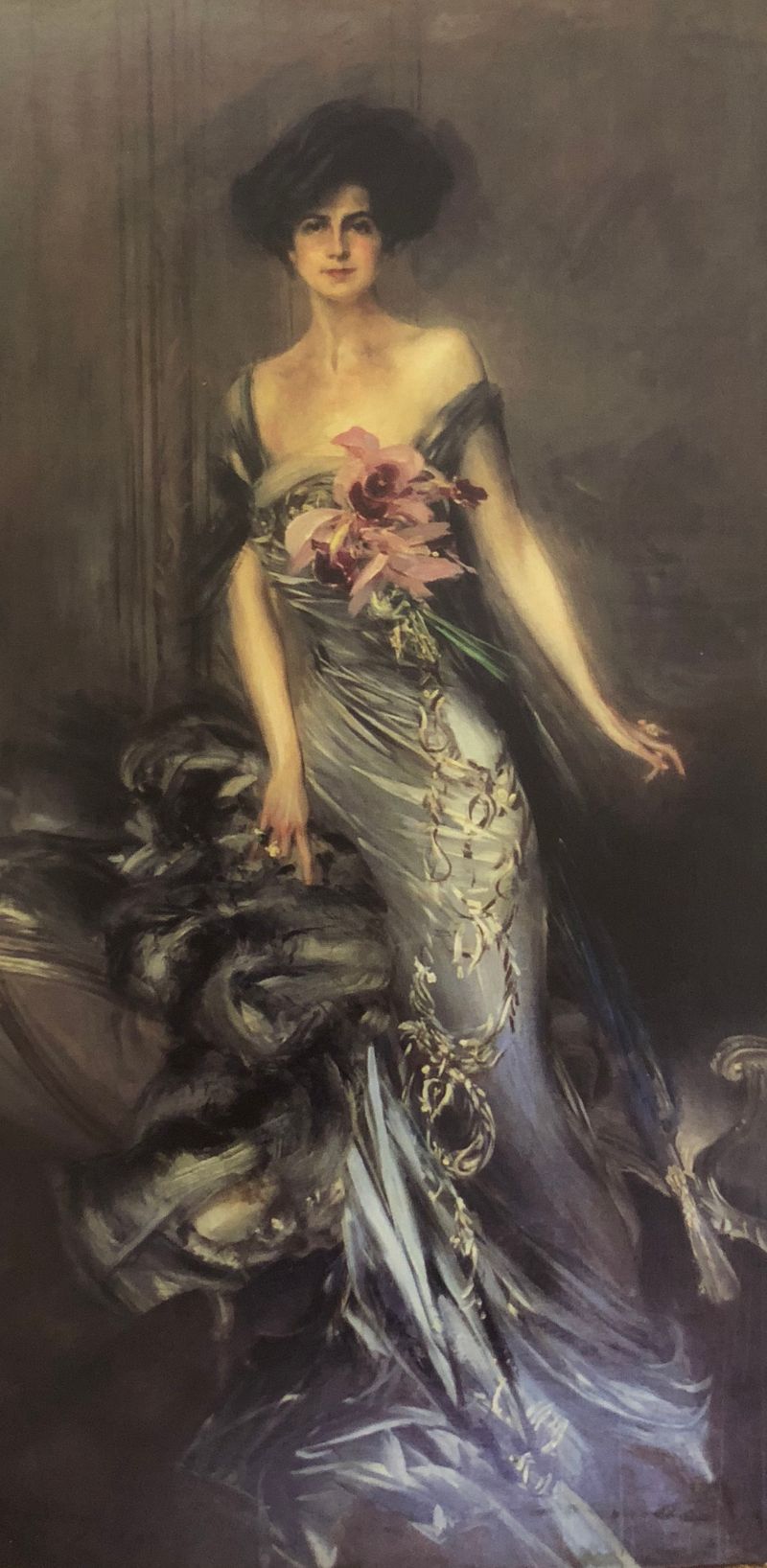In the late 19th and early 20th centuries, America’s newly wealthy industrialists had cash—but not class, at least by Old World standards. Meanwhile, many British aristocrats had titles—but were running out of money to maintain their grand estates. The result? A wave of “Dollar Princesses”: wealthy American women who crossed the Atlantic, married into nobility, and traded dollars for duchies. Here are 17 American heiresses who bought British titles with their fortunes—and rewrote society in the process.
1. Helena Zimmerman – Duchess of Manchester
Helena Zimmerman, heiress to the Standard Oil fortune, married William Montagu, 9th Duke of Manchester. Her wealth was instrumental in supporting his lavish lifestyle and restoring the family estates. Known for her resilience and pragmatism, Helena navigated the complexities of aristocracy with grace. Despite financial strains, she maintained a position in society, providing a steadying influence on her husband’s tumultuous finances. Her story is a testament to the often unseen strength of women behind titled men, quietly shaping their destinies.
2. Mary Leiter – Lady Curzon, Vicereine of India
Mary Leiter, a Chicago department store heiress, married George Curzon, who would become the Viceroy of India. Her elegance and intelligence helped her become a revered figure in the British Empire’s most prestigious post. Known for her diplomatic skills, she significantly influenced British-Indian relations. Her fashion sense also set trends across continents. Unfortunately, her life was cut short by illness, but her impact endured, particularly in diplomatic and social spheres. Mary’s legacy is remembered as a blend of beauty, intelligence, and diplomacy.
3. Consuelo Vanderbilt – Duchess of Marlborough
Consuelo Vanderbilt, known for her grace and charm, was coerced by her mother into marrying Charles Spencer-Churchill, 9th Duke of Marlborough, in 1895. Despite her initial reluctance, her marriage secured the financial future of Blenheim Palace. Her life, though filled with societal accolades, was marked by personal heartache. She eventually found solace in philanthropy and later, in love after her marriage ended. Consuelo became a symbol of the transatlantic marriages that defined an era. Her story is a poignant reminder of the sacrifices made by women for societal status.
4. Jennie Jerome – Lady Randolph Churchill
Jennie Jerome, daughter of a New York financier, captivated British society with her wit and beauty. Her marriage to Lord Randolph Churchill brought her into the heart of the British aristocracy, and she became the mother of future Prime Minister Winston Churchill. Known for her exuberant personality, Jennie was a fixture in London’s elite circles. Despite her marriage’s challenges, she remained influential, promoting political and social causes. Her legacy extended beyond her lifetime, as her son Winston carried forward her indomitable spirit and charismatic charm.
5. Nancy Astor – Viscountess Astor and MP
Nancy Astor, born in Virginia, made history as the first woman to serve in the British Parliament. Married to Waldorf Astor, she used her title and influence to challenge societal norms. Known for her sharp wit and strong opinions, Nancy’s political career was as notable as her social status. Her pioneering spirit paved the way for women in politics, making her a central figure in British history. With a mix of elegance and determination, she navigated and reshaped the political landscape of her time.
6. Clara Longworth – Countess de Chambrun
Clara Longworth, from a prosperous Cincinnati family, married into the French aristocracy, becoming Countess de Chambrun. Known for her intellect and passion for literature, she was a key figure in Parisian cultural circles. Her home, a haven for artists and writers, reflected her deep appreciation for the arts. Clara’s life was a blend of scholarly pursuit and social engagement, earning her a distinguished reputation. Her story is one of cultural enrichment and intellectual legacy, bridging American wealth with European cultural heritage.
7. Pauline Payne Whitney – Duchess of Westminster
Pauline Payne Whitney, heiress to a U.S. political dynasty, married Lord Alastair Grosvenor, one of Britain’s most eligible bachelors. Her dowry was instrumental in maintaining the grandeur of the Westminster estates. Known for her philanthropic efforts, Pauline supported numerous social causes, earning her widespread respect. Her marriage symbolized the union of American wealth with British tradition, a hallmark of the era. Despite the pressures of high society, she maintained a balanced life, contributing to her legacy of benevolence and grace.
8. Mary Goelet – Duchess of Roxburghe
Mary Goelet, heiress to a New York real estate fortune, married Henry Innes-Ker, 8th Duke of Roxburghe. Her substantial dowry was crucial in preserving his ancestral estates. Known for her elegance and poise, Mary was a prominent figure in both American and British high society. Her marriage was not just a financial transaction but a blending of cultures and traditions. Respected for her charitable endeavors, Mary left a lasting impact on the communities she served. Her life exemplified the transatlantic social exchanges of her time.
9. Anna Gould – Duchess of Talleyrand
Anna Gould, daughter of railroad magnate Jay Gould, married two European aristocrats, first Count Boni de Castellane and then the Duke of Talleyrand-Périgord. Her wealth was central to maintaining their noble status, supporting their lavish lifestyles. Despite personal challenges, Anna remained a steadfast figure in European high society. Known for her resilience, she managed to navigate the complexities of her marriages with grace. Her legacy endures as a testament to the transformative power of wealth and determination across continents.
10. Grace Wilson – Lady Curzon of Kedleston
Grace Wilson, sister to Mary Leiter, married into British nobility as Lady Curzon of Kedleston. Her American wealth was crucial in restoring her husband’s ancestral home. Known for her keen social insights, Grace was an influential figure in both American and British circles. Her marriage symbolized the transatlantic alliances of the era, blending wealth and tradition. Despite societal pressures, she maintained her individuality, contributing to social causes and cultural exchanges. Grace’s story reflects the broader narrative of American heiresses redefining aristocratic norms.
11. Cornelia Martin – Countess of Craven
Cornelia Martin, a Gilded Age heiress, married the 4th Earl of Craven, bringing significant wealth to the Craven family. Her financial support was vital in preserving their Warwickshire estate. Known for her strong will and social acumen, Cornelia was a respected figure in high society. Her marriage was a strategic alliance, typical of the era’s social dynamics. Despite challenges, she maintained a vibrant social presence, contributing to cultural and philanthropic efforts. Cornelia’s legacy is one of resilience and adaptability in a changing world.
12. Alice Thaw – Countess of Yarmouth
Alice Thaw, a Pittsburgh heiress, married George Seymour, Earl of Yarmouth. Despite a tumultuous and short-lived marriage, her dowry was vital in sustaining the family’s financial standing. Known for her adventurous spirit and keen intellect, Alice remained a prominent social figure. Her marriage reflected the era’s trend of transatlantic unions for economic stability. Despite personal setbacks, she continued to engage in cultural and philanthropic activities, leaving a lasting impact. Alice’s story is a reminder of the complex intersections of wealth, title, and individual agency.
13. Frances Work – Grandmother of Princess Diana
Frances Work, an American heiress, married James Roche, later the 3rd Baron Fermoy. Although their marriage ended in divorce, her legacy continued through her descendants, including Princess Diana. Known for her strong character and social skills, Frances navigated the British aristocracy with finesse. Her story underscores the intertwining of American wealth and British nobility, contributing to a royal legacy. Despite personal challenges, she remained a significant social figure, leaving a lineage that impacted British royalty. Frances’s life exemplifies the enduring influence of transatlantic alliances.
14. Edith Starr Miller – Lady Queenborough
Edith Starr Miller, heiress to a real estate fortune, married into British nobility as Lady Queenborough. Known for her intellectual pursuits, she authored books on secret societies. Her marriage provided a platform for her literary endeavors, blending wealth with cultural influence. Despite societal constraints, Edith carved her own path in intellectual circles. Her life was a testament to the power of knowledge and wealth in shaping societal discourses. Edith’s legacy is one of curiosity and courage, challenging the norms of her time.
15. Ava Lowle Willing – Viscountess Astor (First Wife)
Ava Lowle Willing, an American heiress, was the first wife of Waldorf Astor, setting the stage for the family’s transatlantic legacy. Known for her elegance and social grace, Ava played a crucial role in the early years of the Astor family in England. Her life was marked by cultural exchanges and societal contributions, bridging American and British traditions. Despite eventual separation, her influence persisted in shaping the Astor lineage. Ava’s story reflects the broader narrative of American heiresses adapting to and influencing aristocratic traditions.
16. Catherine “Kitty” Duer – Lady Templemore
Catherine “Kitty” Duer, a New York socialite and Standard Oil heiress, married Lord Templemore, securing a title and place in British high society. Known for her vibrant personality, Kitty navigated social circles with ease, blending American vivacity with British tradition. Her marriage symbolized the strategic alliances of wealth and nobility, typical of the era’s transatlantic unions. Despite challenges, she maintained her individuality and social influence, contributing to cultural exchanges. Kitty’s story highlights the dynamic interplay of wealth, power, and societal roles in a changing world.
